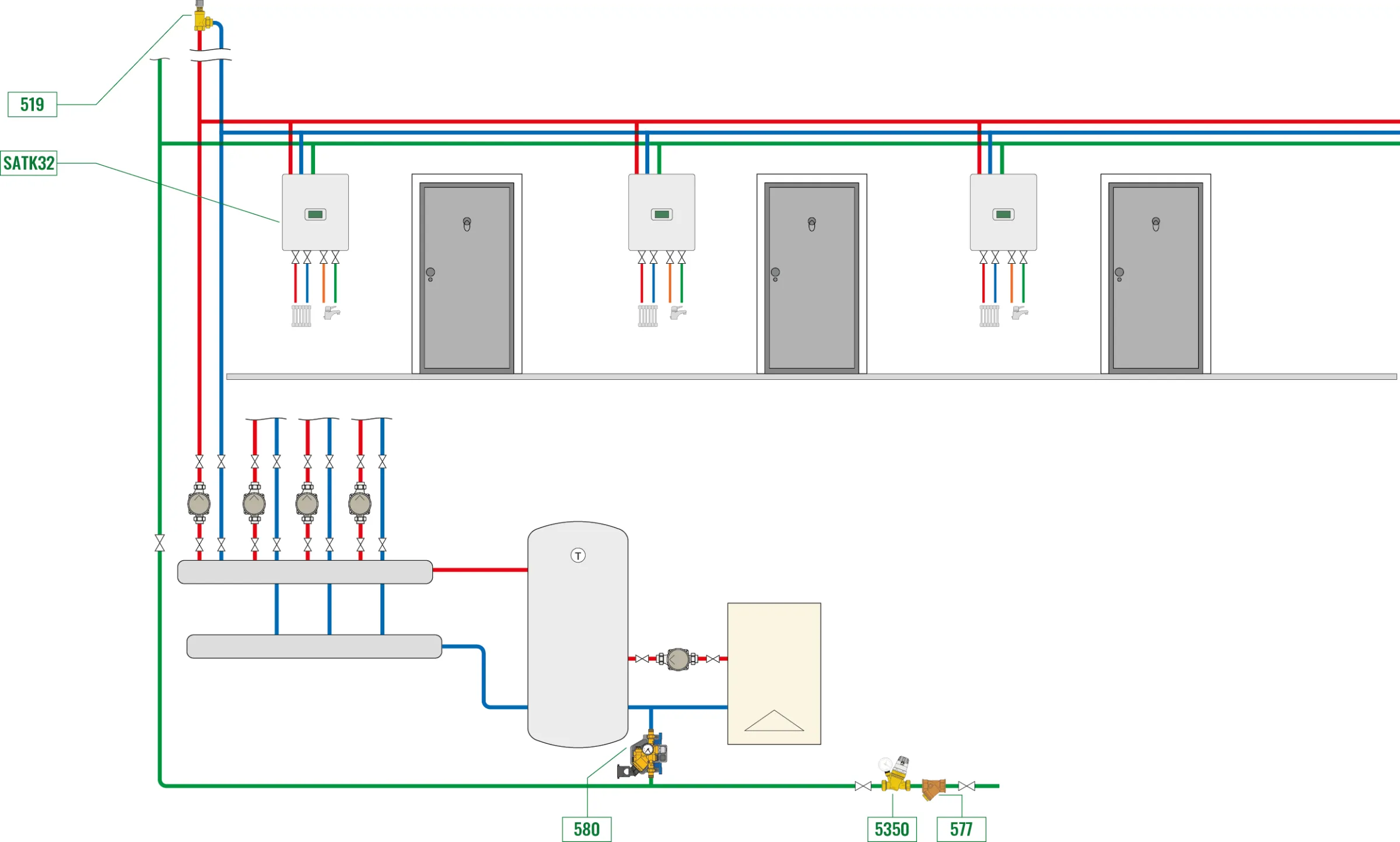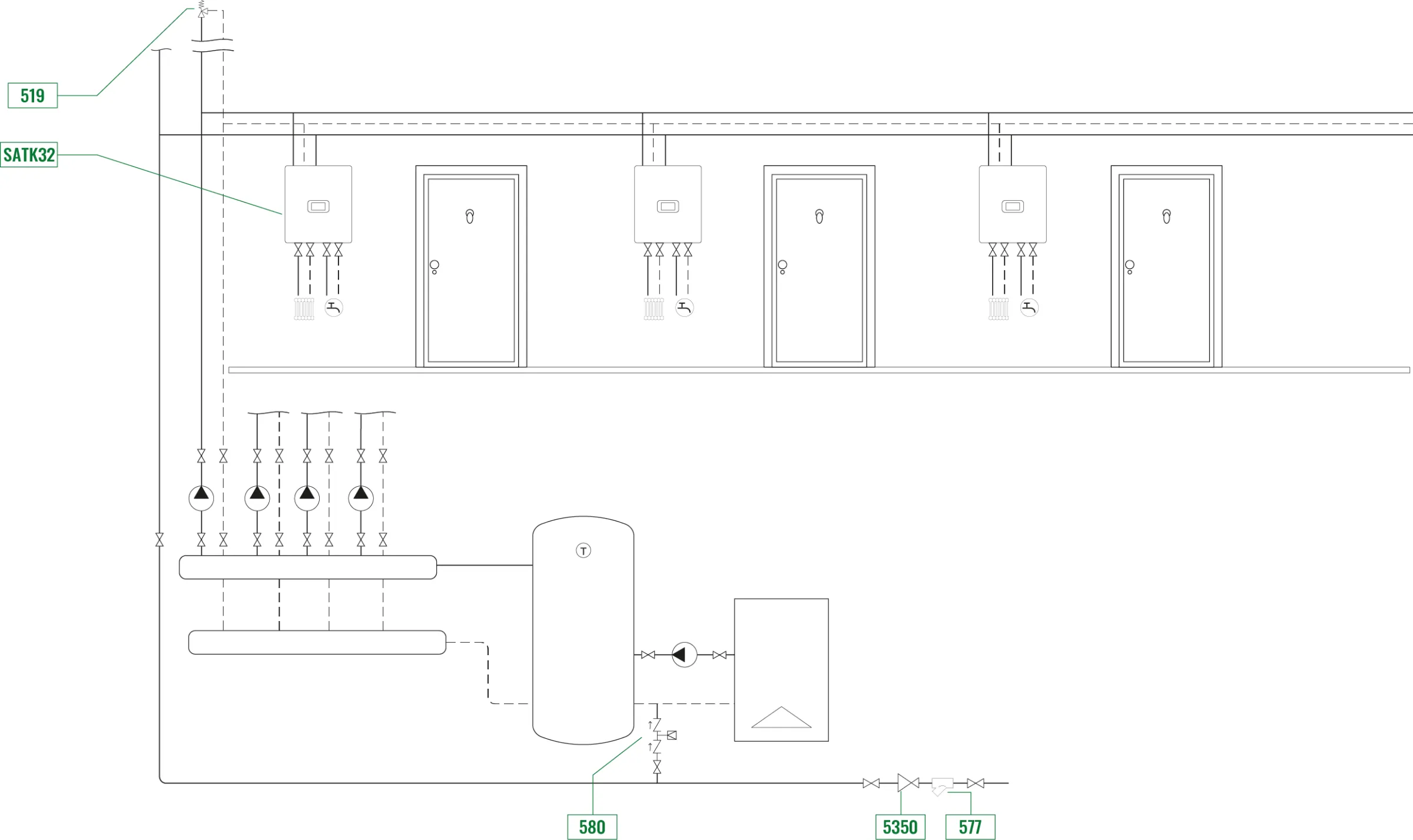

The diagram represents a decentralized system in which the production of domestic hot water (DHW) takes place instantaneously within each individual housing unit, through utility satellites equipped with a high-performance heat exchanger. It is a solution suitable for modern residential buildings, which greatly simplifies the distribution network and reduces installation costs.
Unlike centralised systems with a kettle, this system requires the distribution of only the technical delivery and return water and the sanitary cold water pipe (AFS) up to the entrance of the house. The production of the DHW is managed by an electronic regulator that modulates the flow rate of the heat transfer fluid according to the instantaneous demand, thus ensuring the delivery of water at the desired temperature.
Response times in the supply of DHW depend on the extension of the housing unit and the distance between the satellite and the individual points of use. To improve comfort, some satellites may include preheating features or provision for possible recirculation inside the apartment, useful in large homes.
Since the DHW is never accumulated, the presence of a main recirculation circuit is not necessary. However, to avoid cooling of the upright columns in case of prolonged periods of non-use, it is advisable to adopt by-pass at the top, so as to ensure a minimum circulation of technical water. This helps to avoid delays in the production of DHW and improves the overall efficiency of the system.
Finally, instant production eliminates the risks of stagnation and bacterial proliferation, making thermal disinfection operations unnecessary. In fact, hot water is prepared only at the time of use, thus guaranteeing a high hygienic standard.




